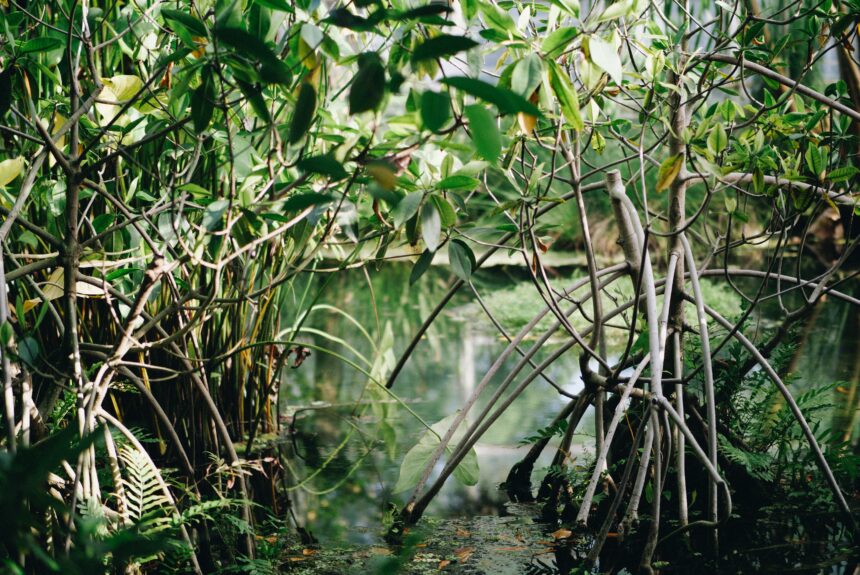Mangroves are critical to the health of coastlines across the globe. These shrub-like trees reduce coastal erosion while simultaneously providing a habitat for fish and other creatures as they straddle the area where the coast meets the ocean. Coastlines need mangroves, but forests are dwindling as more mangroves are cleared to make room for human development and industry. Now, thanks to new research, one of the key sources of destruction could be the very thing to accelerate mangrove restoration.
>>>READ: Private Capital is Funding Conservation Across the Country
Shrimp farms across the globe have increased production by 1,000 percent over the past 30 years as consumer demand for farmed seafood grows. But mangroves are paying the price for the increased demand. To make room for shrimp farms, coastal wetlands both in the U.S. and around the world are being cleared. The current state of shrimp farming is highly detrimental to mangroves, but one scientist has found a way to make small shrimp farms mangrove-friendly.
Dane Klinger is the aquaculture expert at Conservation International, an organization dedicated to protecting nature for the sake of human life on our planet. Klinger has been working to solve some of shrimp farming’s sustainability dilemmas. His research has resulted in a first-of-its-kind approach to shrimp farming that can boost yields while simultaneously protecting mangrove forests.
“Traditionally, small shrimp farmers keep things simple. They might add a bit of fertilizer to boost natural productivity, but they don’t heavily stock ponds or provide much added food for the shrimp. Productivity on these farms remains low,” explained Klinger.
“What we’re doing is taking half that land and restoring it as a mangrove forest, while helping farmers increase their output on the rest. We begin by stocking larval shrimp, adding feed for the shrimp, and keeping an eagle eye on water quality factors like temperature, oxygen levels and salinity to create the ideal conditions for shrimp growth and health. Aerators might be introduced to ensure optimal oxygen levels. Automatic feed dispensers can be used to ensure proper nutrition and growth. Pond liners made of plastic or concrete are often used to ensure more precise control over the shrimp’s environment.”
Being able to give land back to mangroves while increasing shrimp numbers sounds great on paper. But Klinger acknowledged that boosted production could introduce a new problem: higher disease and mortality rates for confined shrimp, along with animal welfare concerns. To prevent this issue, he is putting innovative new technology to work on this problem. Conservation International is working with a company called JALA that helps give small and medium shrimp farms the same sort of data and monitoring capabilities that corporate farms use. This data helps farmers make adjustments to keep the shrimp healthy and thriving, even in smaller pond sizes.
>>>READ: Blue Carbon: A Natural Climate Solution
This restoration strategy is currently being tested at two pilot programs, one in Ecuador and one in Indonesia. Klinger and his team are providing finance and expertise to shrimp farmers who are implementing the new strategy to boost production while restoring mangroves. The researchers are now working to increase the scale of the pilot projects by providing a loan fund to help farmers transition their production methods while developing artificial intelligence tools that can locate optimal sites for mangrove restoration.
Klinger could have pursued a strategy to protect mangroves while ignoring any cost to shrimp farmers. Instead, he found a way for both mangroves and farmers to thrive. The best possible outcome for a conservation initiative is the flourishing of both people and the planet. Thanks to this research, shrimp farms of the future could be better for mangroves, shrimp, and independent farmers alike.
Kelvey Vander Hart is a native Iowan, a member of the American Conservation Coalition, and a communications specialist at Reason Foundation.
The views and opinions expressed are those of the author’s and do not necessarily reflect the official policy or position of C3.
